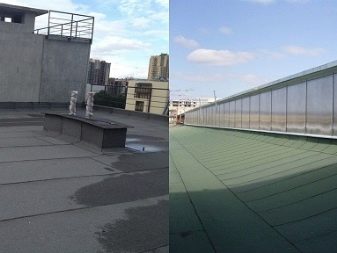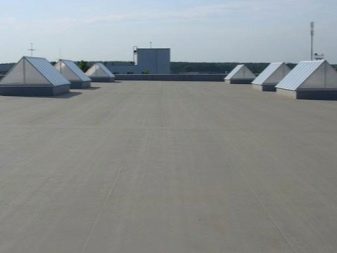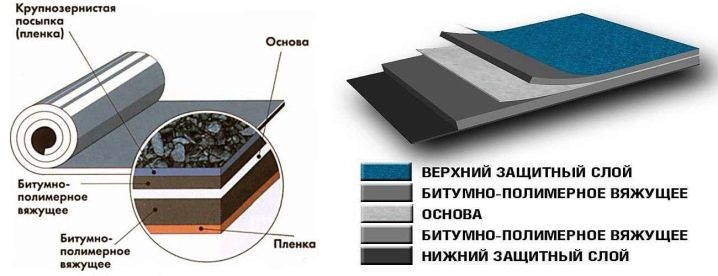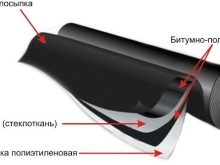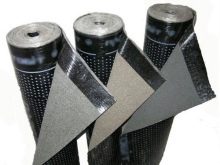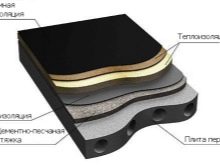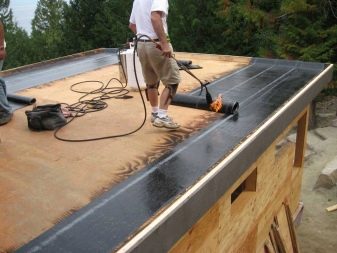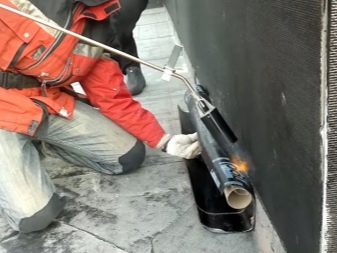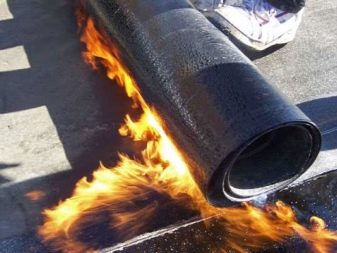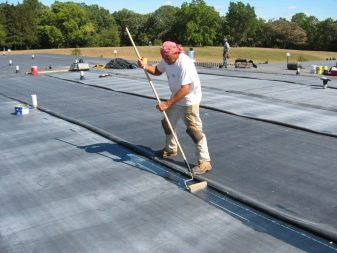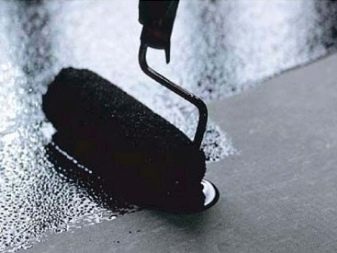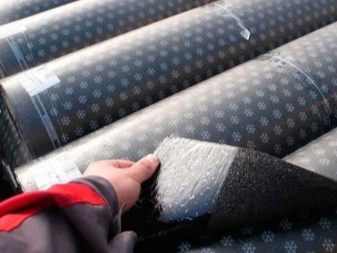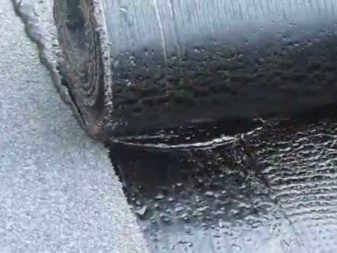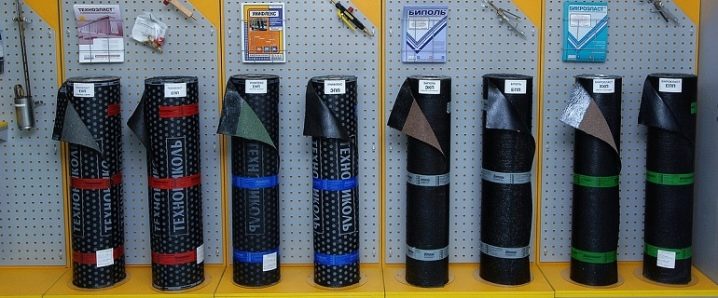Overlaying roof "TechnoNIKOL": advantages and disadvantages
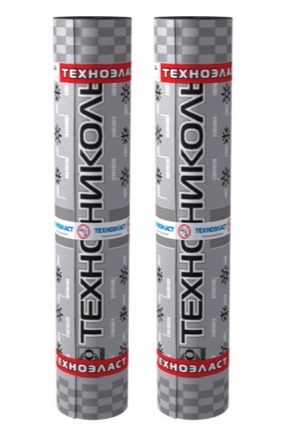
Weld roofs "TekhnoNIKOL" are roofing and waterproofing roll materials, which are based on non-rotting fabric. They are designed to create a roofing carpet on the roofs of various kinds of buildings and structures, and are also used as a waterproofing material in the construction of bridges and protection of foundations and tunnel arches from moisture.
Special features
The main function of any roofing is to protect the building from wind and precipitation, which is achieved due to its integrity, reliability during operation and durability. Welded roll roofing "TechnoNIKOL" fully correspond to these parameters.
Traditional waterproofing material of this kind is a well-known roofing felt. It represents a cardboard basis with the bituminous impregnation applied on it. This material does not differ in durability, its installation on the roof is a rather complicated process, and its bituminous coating under the influence of the sun and temperature differences with time cracks. As the tightness of such a coating decreases, moisture penetrates under it, which destroys the cardboard base of the material. Therefore, when conducting roofing, roofing material is now giving way to other more reliable and progressive materials.
Modern technologies for the manufacture of roll roofing waterproofing suggest the use of glass fiber and synthetic materials with increased strength as the basis. Modifying components are now added to bitumen to give additional operational qualities to the coating. Modern roofing rolled deposited material basically has fiberglass or polyester. Increased strength characteristics increase the life of such a material for a period of 15 to 35 years.
A polymer-bitumen coating is applied on such a base from two sides. By adding plasticizers to bitumen, impregnation acquires high strength and increased elasticity.
As a result, the material does not form cracks during heating and cooling and can be operated in a wide temperature range without reducing its performance characteristics.
On the front side of the bitumen-polymer coating applied a protective layer consisting of shale or granite chips. Its function is to protect the surface from the influence of atmospheric factors and ultraviolet radiation.
A layer of protective film is glued to the back of the roll. It is designed to protect the material from sticking during storage and during transportation. Before starting roofing, this protective film should be removed.
Manufacturing technology
The installation of this coating is carried out by melting its lower bitumen-polymer layer and rolling the material to the surface. This layer is heated by a gas burner. The roll as it softens from the heating of the bitumen layer by the burner rolls onto the surface to be coated with an overlap of 50 mm. In order to control the degree of softening, a geometric pattern is applied to the bottom layer. When the outline of this image is distorted, the bituminous bottom layer becomes soft enough to fix.
The exact positioning of the next piece of canvas at the place of its installation is determined by rolling the roll. Then the material is laid on the area of the roof, intended for its placement.
When carrying out work, it is necessary to observe an overlap on the vertical surfaces, which can be the walls of the parapets, the joints of the roof with ventilation pipes, chimneys and other elements of intra-house structures.
The roll is rolled up and the welding starts, which is made when the web rolls “to itself”. This makes it possible to better control the degree of heating of the surface. The gas torch should be moved evenly and smoothly, paying particular attention to areas where overlap is made. The flame jet should be directed so that not only the canvas but also the surface of the base are heated.
If there is a need to install a sheet for dressing, the processing of one lower bitumen-polymer layer will be insufficient.First, a warming up of the surface is required, and then rolling it with a roller to completely immerse the material in bitumen, after which the laying continues in the usual manner.
Before starting to weld the roof, the surfaces of the concrete slabs must be primed. To do this, use either a standard mixture purchased at a hardware store, or prepare a primer on its own, mixing bitumen mastic with gasoline in a ratio of 1: 3. The surface treated in this way has a much stronger adhesion with the deposited material.
The basis for the installation of such a coating, in addition to the above primer, is prepared in accordance with certain requirements. Flat and maloskatnye roofs for the most part have a concrete base. Therefore, before the overlaying of the built-up roof between the concrete slabs of such a roof, thermowells should be arranged.
The task of these thermoshoes is to compensate for thermal expansion from heating during operation. The width of such a gap should not be less than 5 mm, and the gap should be filled with plastic waterproofing material.
All protruding surface elements must be mechanically removed so that on the surface of the roof there are no projections larger than 5 mm, and only smooth ones. All potholes and cracks are carefully sealed with sand-cement mortar after their preliminary preparation by stripping the damage. The presence of oil stains is unacceptable. When found, they must be removed with a solvent.
The basis for such a finishing coating often serve as sheets of moisture-resistant plywood, OSB boards and other similar materials. Installing the weld overlay on such substrates is dangerous due to their flammability.
Therefore, before starting work, such surfaces should be thoroughly treated with flame retardant compounds, the work site should be equipped with fire extinguishers and other fire extinguishing agents.
The roof surface is thoroughly cleaned from debris and dust with an industrial vacuum cleaner prior to starting work on fusing roofing material.
Works should be carried out in dry, windless weather at temperatures from -5 to +25 degrees Celsiusby mounting on a clean roof surface.The ideal conditions are considered to be about 80% humidity at an air temperature of + 6 degrees. If the work is carried out in other conditions, it is allowed to use a building hair dryer for the purpose of additional heating of the concrete surface of the plates.
Advantages and disadvantages
All types of built-up roofing materials are distinguished by a long service life, which for TekhnoNIKOL is, as already mentioned, about 15 - 35 years. This material is very durable, elastic and resistant to mechanical damage, the appearance of fungus and moisture.
In addition to being able to withstand temperature fluctuations without deforming or cracking, it makes it possible to hide surface defects. With high heat and sound insulation and external aesthetics, this material has a relatively low cost: about 500 rubles per roll of 9 m2.
Nevertheless, a roof covered with such material is not vapor-proof, and it itself is flammable. When carrying out installation work with it, fire is used, so there is a risk of fire.
In this video, you will find a video tutorial on the fusing of the roof "TechnoNIKOL".

